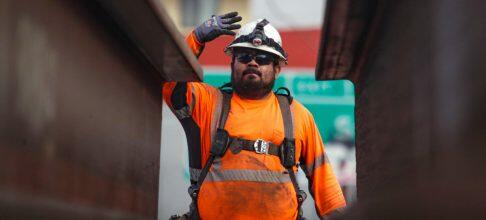Skip Navigation The past few years have been rough on all of us. Many have lost jobs, homes, loved ones. In these uneasy times, we have been able to look up to the select few who have persisted anyhow—but even our heroes need a break too. Such is the tale of authoritarian former Brazilian president Jair Bolsonaro, whose loss to Luiz Inácio Lula da Silva in this year’s presidential election may lead him to seek refuge at … Donald Trump’s Florida resort? It’s a very on-trend moveanyway. According to Brazilian outlet UOLBolsonaro plans to skip out on officially handing over the presidential sash to Lula, and instead cool his jets at Trump’s Mar-a-Lago resort in Palm Beach. The venue is familiar territory for Bolsonaro; he and Trump shared a meal there in March 2020, right at the beginning of the pandemic which both leaders famously bungled (the U.S leads the world in Covid deaths at nearly 1.2 million; Brazil is right behind at nearly 700,000). A future Zagat guide might describe the resort as the perfect sanctuary for serially-criminal and basically off-putting guys who just cannot fathom that people simply might not want to vote for them again. However, some Bolsonaro insiders claim that his New Year’s Eve destination will actually be an Orlando condominium—a home offered to Bolsonaro by a supporter. The Nation's reporting affirms the ambiguity of Bolsonaro’s exact plans, but confirms preparations are indeed in motion for the former President to travel to Florida. He will likely depart in the coming days, as access to the presidential plane only lasts through his term, which expires Saturday. So, while Bolsonaro will ring in the new year retreating from his home country, the revival of Lula will mark the new year in Brazil. It remains unclear whether Bolsonaro will be joined on holiday by his wife, Michelle. Earlier reports indicated she would not be traveling, but recent updates report her planning to travel to Miami while her husband embarks on his solo venture. Regardless, Bolsonaro—who has still refused to concede the election—now may be skipping his successor’s inauguration and ditching his wife to sojourn in Florida for up to two months. Perhaps we just found our Loser of the Year. Covid-19 cases, hospitalizations, and deaths are on the rise once more in the United States, but government funding to fight the disease is on the decline—permanently. Existing funds to battle the coronavirus are running out, and the White House has been asking Congress for months to include billions of dollars for testing, vaccines, and treatments in the omnibus spending package that just passed the Senate. But the massive $1.7-trillion federal budget bill includes no mention of federal Covid funding. In June, Joe Biden’s administration began using funds previously earmarked for coronavirus tests and protective equipment to buy more antiviral pills and vaccines. Eventually, that money will run out, too. Once government funding ends, paying for Covid testing, vaccines, and treatments will be bounced back to health insurance companies, which will make it “incredibly hard to deal with COVID, to get tested for it, to get treated,” Dr. Kavita Patel, a primary care doctor in Washington, told Marketplace. For a few years, the coronavirus forced the U.S. government and health care system to actually work. Testing centers dotted street corners; treatments were free; and vaccines were smoothly rolled out on a massive scale. But when government funding dries up, that is all going to change for the worse. More than 27 million Americans did not have health insurance in 2021, according to the Kaiser Family Foundationmeaning they and anyone else who has since lost coverage would have to pay out of pocket for Covid supplies. And many of them will likely be unable to afford to do so. As a result, more people are likely to forgo getting the latest booster shot or even getting tested, raising the probability of increased community spread and the likelihood of new variants emerging. Biden has declared the pandemic over (except for people who have chronic illnesses or autoimmune issues, or are disabled). But if people are forced to do without the latest vaccine, it may very well come surging back. Former White House aide Cassidy Hutchinson told the House January 6 investigative committee that she saw her erstwhile boss, Trump White House Chief of Staff Mark Meadows, regularly burn documents in his office fireplace. Hutchinson was a star witness for the committee over the summer, providing bombshell details about Donald Trump’s level of knowledge of and involvement in the attack on the Capitol. She also made a series of fiery revelations when she initially testified in May, according to transcripts the committee released Tuesday. Hutchinson said that Meadows burned multiple batches of documents about a dozen times in his office fireplace between December 2020 and January 2021, including after two meetings with Representative Scott Perry. Perry, a Pennsylvania Republicanhas been linked to efforts to make the Justice Department overturn the 2020 election. Meadows has been ordered to testify about efforts to overturn the election results in Georgia. Talking Points Memo also reported in early December that a laundry list of election deniers in Congress had texted Meadows multiple times about subverting U.S. democracy in Trump’s favor. Hutchinson also testified that Representative Marjorie Taylor Green discussed the QAnon conspiracy group multiple times with Meadows and Trump; during one of those conversations, she told Meadows that her QAnon supporters would be attending the January 6 “Stop the Steal” rally in Washington, which eventually turned into the Capitol Riot. Her testimony comes a week after the revelation that Trump’s former ethics attorney advised Hutchinson to lie to the January 6 committee. On Tuesday, the Supreme Court voted to keep Title 42—a Trump-era policy that expels asylum seekers—in effect, overriding a district judge’s November decision that would have ended the policy last week. The Supreme Court will now entertain arguments in February, with a decision expected months from now, in June. The 5-4 decision went in favor of the 19 Republican state attorneys general who had filed an emergency request in response to a ruling from U.S. district judge Emmet Sullivan, who ruled that Title 42 was “arbitrary and capricious in violation of the Administrative Procedure Act.” Sullivan’s ruling described how the Center for Disease Control hadn’t evolved the policy alongside the changing state of the pandemic, failing to make adjustments as wider availability of vaccines, testing, and treatments became the norm. The majority’s decision flicked at the court’s conservative bloc’s tendency to play Calvinball with the law; having previously allowed the Trump administration the leeway to act as it willed in illegally rejecting asylum seekers, it thwarted the attempts of the executive branch to remediate those policies once it became “the Biden administration.” But the decision didn’t entirely break along partisan lines. Justice Neil Gorsuch joined Justices Sonia Sotomayor, Elena Kagan, and Kentanji Brown Jackson in dissenting. Gorsuch wrote that “the current border crisis is not a COVID crisis,” and accordingly, “courts should not be in the business of perpetuating administrative edicts designed for one emergency only because elected officials have failed to address a different emergency.” Gorsuch’s thoughts in a losing opinion can only provide so much comfort. After all, just as the 19 Republican attorneys general sought to use Covid as a justification for draconian asylum restrictions, the Supreme Court played a similar round of Covid Calvinball last year when deciding to reject administrative action for workplace safety. Arguing that the Occupational Safety and Health Administration’s Covid testing mandate for workers overstepped the boundaries of the agency’s authority by issuing a “public health” edict instead of a “workplace safety” rule, the Supreme Court ruled 6-3 to block the mandate. In that instance, the court’s six conservative justices argued that Covid presented a “universal risk” and not just a specifically occupational hazard; the dissenters rightly pointed out that “[the OSHA statute] is indifferent to whether a hazard in the workplace is also found elsewhere.… That provision authorizes regulation to protect employees from all hazards present in the workplace.… It does not matter whether those hazards also exist beyond the workplace walls.” With the conservative-led Supreme Court’s incoherence on overseeing Covid-inspired policy, it’s no surprise that Republican members of congress—particularly those who have been on the front lines of Covid denialism—have cited the pandemic as a justification to skip votes (and sometimes end up instead happily attending CPAC). The United States continues to disregard its own laws and principles on accepting asylum seekers. Halfway through the Biden administration, the Trump-era policy tweak has been allowed to continue while Biden has sought to quietly neutralize the border as an issue. In response to the Court’s decision, the administration says it is still preparing to manage the border while the Court reviews Title 42, and challenges Republicans “to move past political finger-pointing and join their Democratic colleagues in solving the challenge at our border.” But such bland messaging might not be up to snuff in confronting a Supreme Court that seems to want to make up the rules of the game as it goes along. Elon Musk’s year just went from bad to … nice. The value of Tesla’s stock plunged a whopping 69 percent over the course of 2022, on track to be its worst annual performance ever. That drop has also cost the electric carmaker its position as one of the 10 biggest U.S. public companies. When Twitter users saw that Tesla stock had lost a pretty sexy amount of valuethey couldn’t resist commenting on it. $Tesla has 69% plunge. Nice. Tesla down 69% in a year. What's that joke Elon Musk keeps making? Nice. pic.twitter.com/NPB7K7ozav 69. Nice. pic.twitter.com/3pHEILnrwM nice Nice. Tesla has really struggled this year. The company had to suspend work at its massive Shanghai factory, and demand for the cars is so low that Tesla began offering $7,500 discounts for new vehicles, while the price of used ones dropped sharply, reported Popula, which is tracking how much Tesla’s value has dropped. Already plagued by supply chain snarls, legal suits, and PR issues, Tesla was sent into a tailspin when Musk took over Twitter at the end of October. It hasn’t helped that Musk lied to Tesla investors about selling off company stock and seems more interested in letting Nazis back onto Twitter than running the electric car company. Unfortunately More on Elon The massive winter storm that battered the country over the weekend hasn’t just snowed under half of the United States. The airline industry is also on ice: Thousands of flights have been canceled, and although air travel is slowly returning to normal, one carrier in particular—Southwest Airlines—is struggling hard to unmuddle itself. Southwest canceled 63 percent of its scheduled Tuesday flights and has already canceled 62 percent of its flights for the following day, according to flight tracker FlightAware. Reports abound of hours-long waits in customer service lines, people sleeping in airports waiting to get rerouted, and suitcases piling up at the airline’s desks. But these recent snafus can’t be entirely pinned on the inclement weather—it’s the absolutely shambolic state of Southwest’s inner workings that are actually to blame. Many airlines lacked sufficient staff for the holiday weekend, but Southwest also hurt itself by not blocking out enough turnaround time between flights, a FlightAware spokesperson explained to CNN. The president of the Southwest flight attendants’ union also told CNN that they have not been able to get in touch with their bosses at the airline. Both Southwest’s manpower and internal communication issues are partly due to its outdated crew scheduling system, according to a member of the flight crew on a British Airways planewho goes by the Twitter name @JustAnother_Ben. for each one to individually call scheduling to tell them where they are. Their phone lines are swamped and I’ve seen screenshots of crew on hold for 23+ hours trying to get through to scheduling. An aviation watchdog that goes by the Twitter handle @JonNYC shared an internal memo from Southwest’s vice president of ground operations Chris Johnson. In the memo, Johnson declared a state of operational emergency at the Denver International Airport and said employees would be fired for calling in sick without a doctor’s note, requesting personal time off, or refusing to work now-mandatory overtime. .@SouthwestAir your solo desk agent worked 16 hours, was asked to keep working because of canceled flights. They broke down crying at the desk. This employee treatment is not ok. The president of the Southwest Airlines Pilots Association, Casey Murray, told CNN that these problems have been going on for nearly two years. Winter Storm Elliot appears to be merely the straw that finally broke the camel’s back. “These sorts of meltdowns occur on a much more regular basis and it really just has to do with outdated processes and outdated IT,” Murray said. “It’s phones, it’s computers, it’s processing power, it’s the programs used to connect us to airplanes—that’s where the problem lies, and it’s systemic throughout the whole airline.” Four power substations in the state of Washington were attacked on Sunday, knocking out power for more than 14,000 customers. The Christmas Day station attackers damaged equipment at each station and set a fire at one. These most recent attacks join an alarming trend of vandals, trespassers, and domestic terrorists who have targeted power substations across the country. From North Carolina and Oregon, Washington to Florida, intruders have disabled equipment and even struck stations with gunfire. Tens of thousands have lost power as a result; North Carolina residents were recently without power for four days. Attacks on the power grid are not unheard of—but they’re soaring compared to previous years. Documents obtained by Politico showed that “the past three years have been the most active for reported attacks on the grid in the past decade,” with “101 reported this year through the end of August” after a previous peak of 97 attacks for the entire year of 2021. There have been numerous warnings, but stakeholders just don’t seem prepared for the onslaught. Nearly a year ago, The Daily Beast obtained a DHS intelligence report that warned of extremist groups identifying the “electric grid as a particularly attractive target given its interdependency with other infrastructure sectors.” And CNN recently obtained a 14-page document circulating on Telegram that included a white supremacist instruction guide for how to conduct low-technology attacks that foment chaos, including attacking a power grid with firearms. “When the lights don’t come back on … all hell will break lose [sic]making conditions desirable for our race to once again take back what is ours,” the document reads. In February, three men pleaded guilty of plotting to attack substations with firearms. The trio were alleged white supremacists who had for years strategized how to incite civil unrest, hoping to touch off a potential race war, and the second Great Depression. Such attacks are disturbing in their own right. But the broader context behind the ideological underpinnings of the attackers only causes more concern. The January 6 Capitol Riot demonstrated the extent to which right-wing radicalization has deepened the resolve of fringe actors to attack the institutions that keep this country running. And in terms of pure mayhem, the attacks on power substations are arguably a lower risk-for-higher reward pursuit compared to mounting an attack on the U.S. Capitol: Literally fatal power outages from New York to Tennessee reveal how keenly vulnerable our country’s infrastructure—and citizens—are to power mishaps. Politicians gleefully throw support behind brutally reckless over-policing; perhaps they could consider still satisfying their itch for vigilance by at least shifting their focus to protecting our crucial power infrastructure from those who’ve clearly been targeting it in increasing numbers. More on Political Violence Representative Marjorie Taylor Greene is under fire again, but this time it’s coming from her former far-right allies in Congress. At issue is Greene’s vocal support for Kevin McCarthy’s bid for speaker of the House, which has already put her in the crosshairs of many far-right pundits. Now, her colleagues think she’s gone too far, as well. In an essay published last Wednesday in The Daily Caller, Greene accused a group of lawmakers who have dubbed themselves the “Never Kevin Five” of lying to voters when they claim that there will be a viable alternative candidate who can successfully challenge McCarthy for the Speaker’s gavel. “Lying to the base is a red line for me,” Greene wrote. Never Kevin's Andy Biggs fired back a few days later. “She’s kind of crossed the Rubicon there. She’s calling us liars and saying we’re misleading,” he said on Lindell TV. (Apparently, neither of these two avid conspiracy theorists and election deniers sees the irony here.) McCarthy, still a staunch ally of former President Donald Trump, has made no secret of his desire to be speaker. He has already unveiled a host of plans for when he and his party take control of the House of Representatives, including impeaching various cabinet members, investigating Hunter Biden, scaling back aid for Ukraineand attacking LGBTQ people’s rights. But he faces serious opposition, and not just from the “Never Kevin Five,” which consists of Biggs, Bob Good, Matt Rosendale, Ralph Norman, and Matt Gaetz. Don Baconwho is a more centrist Republican, has indicated he’s willing to work with Democrats to elect a more moderate speaker. Greene has urged her colleagues to unite behind McCarthy, but her alliance with the California representative does not appear to be going well for her. The feud with Biggs is only the latest public beef she’s had with a former ally. Greene and Colorado Representative Lauren Boebert—who previously were big on MAGA women supporting MAGA women—have locked horns over both Greene’s support for McCarthy and her penchant for wild conspiracy theories. Again, yes, the irony is lost upon all of the parties involved. Since Elon Musk bought Twitter, Tesla’s stock value has been cut in half. Musk’s reckless behavior—from reinstating far-right radicals and banning journalists, to haphazardly laying off workers, posting Nazi pictures, encouraging people to vote Republican, and alienating advertisers galore—has played a large role in the dramatic free fall. And it’s not like Twitter is the only firm that’s been inundated by Muskian chaos. Tesla has been embroiled in numerous legal and PR issues related to rampant sexual harassment and racism in factories, to the company’s “self-driving” cars’ apparent propensity to spontaneously combust or run into pedestrians. It’s no surprise that investor confidence would be at an all-time low now that Musk’s attention has been split between the two troubled companies. Musk himself has a dwindling commitment to the company he took over in 2008. He has sold nearly $40 billion worth of Tesla stock in a little over a year, mostly to maintain Twitter’s viability. Naturally, this has all been to the detriment of those who still hold stock in Tesla. But in his attempts to massage those concerns, Musk has, in effect, been continually lying to investors, which in turn has only given these benefactors even more fodder to distrust Musk and flee the company. Musk sold around $8.5 billion in stock in late April, pledging on April 29 “no further TSLA sales planned after today.” It was a pledge he couldn’t keep: On August 10, he sold another almost $7 billion. Once again he promised he was done selling, and once again, he reneged on that promise: On November 8, he sold some $4 billion; he cashed out another $3.6 billion on December 14. In a Twitter spaces conversation on December 22, Musk pledged once again to stop the sell-off. “I won’t sell stock until, I don’t know, probably two years from now,” he said. “Definitely not next year under any circumstances and probably not the year thereafter.” That someone as mercurial as Musk can be trusted to keep a commitment spanning the next two years is hard to believe, given his propensity for breaking promises—something that’s ticked up to a weekly basis since he acquired Twitter. Now, the share value of the venture that enabled Musk to burnish his reputation as a prodigal tech genius is falling, with no end in sight, all at the expense of the Twitter acquisition—a pursuit largely driven by Musk’s hunger for attention, and his yearning to feel funny or well-liked. My son, who is a software engineer, just told me that people who know software just had their Elon Musk realization. pic.twitter.com/eEFBuoHREm If he’s just in it for the comedy, Musk can rest well knowing that many are surely reveling in the laughable absurdity of it all. Meanwhile, those most invested in Musk’s success—investors themselves—are perhaps reckoning with the idea that the best time to divest from Musk was probably yesterday. And that the next best time would be right now. Unfortunately More on Elon Over the holidayNew York magazine’s Olivia Nuzzi produced a compulsively readable dispatch on the nascent presidential campaign of Donald Trump, who has been largely holed up at Mar-a-Lago since leaving office. It’s a detail-rich endeavor, but one particular factoid jumped out: Trump apparently is a massive fan of Billy Wilder’s Sunset Boulevard, in which Gloria Swanson cemented her icon status playing the role of Norma Desmond: a silent film–era superstar driven to near madness by her own keen sense of faded glory, and whose ill-fated comeback attempt ends in tragedy. A little too on-the-nose, you say? Maybe a loton-the-nose. See if you can parse the fact from fiction: Which of the following quotes are from Sunset Boulevard, and which are from Nuzzi’s article? (Answers at the end.) ANSWERS: Desmond said2, 5, 7, 10, 11, 12. Trump said1, 3, 4, 6, 8, 9, 13.— Kyle Cheney (@kyledcheney) December 27, 2022
I can be chill about weather/computer issues, but abusing your workers will make me switch airlines.
Read More














